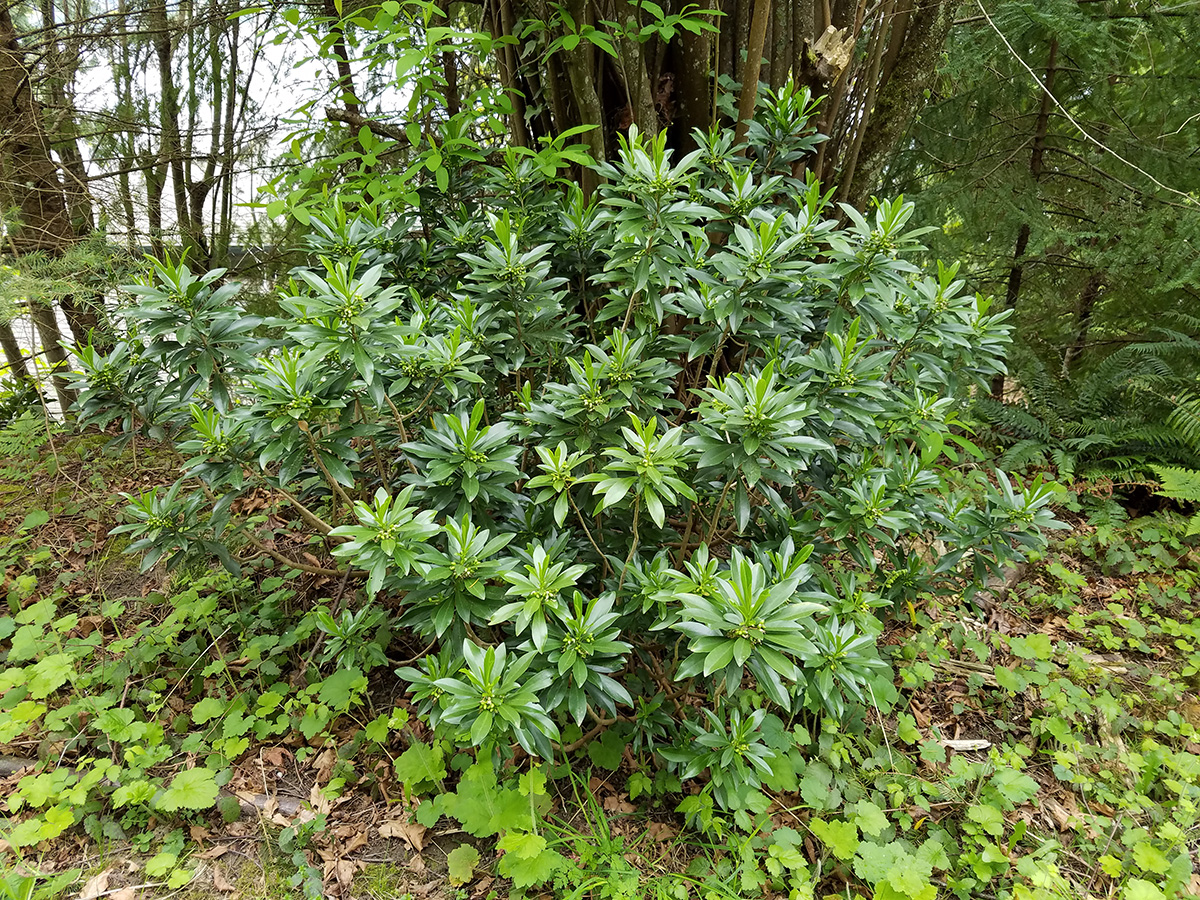Community Initiatives: Combating Invasive Species in Victoria, BC
Working Together to Protect Our Local Ecosystems from Spurge Laurel and Other Threats
Need help with your yard? Get your free quote today!
Get a Free Quote!
Introduction
Victoria, BC, is celebrated for its stunning natural landscapes and rich biodiversity. However, invasive species like spurge laurel (Daphne laureola) threaten the health of our local ecosystems. Community initiatives play a crucial role in combating these invasive plants, preserving the environment for future generations. In this article, we explore the collective efforts in Victoria to manage invasive species, highlight successful programs, and discuss how businesses like Ascent Yard Care contribute to these vital initiatives.
The Threat of Invasive Species in Victoria
Understanding Invasive Species
- Definition: Non-native plants, animals, or pathogens that cause harm to the environment, economy, or human health.
- Common Invasives in Victoria: Spurge laurel, English ivy, Scotch broom, Himalayan blackberry.
Impact on Local Ecosystems
- Biodiversity Loss: Invasive species outcompete native flora and fauna.
- Habitat Destruction: Alter the structure and function of natural habitats.
- Economic Costs: Affect forestry, agriculture, and tourism industries.
Spurge Laurel: A Specific Concern
- Rapid Spread: Proliferates in shaded areas, forests, and gardens.
- Health Hazards: Toxic to humans and animals.
- Environmental Impact: Disrupts native plant communities, affecting wildlife that depends on them.
Community Initiatives in Victoria
1. Volunteer Removal Programs
Greater Victoria Green Team
- Activities: Organizes invasive species removal events in parks and natural areas.
- Community Engagement: Encourages residents to participate in hands-on conservation efforts.
- Impact: Thousands of volunteers have removed tons of invasive plants, restoring native habitats.
Case Study: Spurge Laurel Pull at Mount Douglas Park
- Event: Over 50 volunteers gathered to remove spurge laurel.
- Outcome: Cleared several acres of infestation, allowing native plants to recover.
- Community Spirit: Fostered a sense of stewardship and collaboration among participants.
2. Educational Workshops and Resources
Habitat Acquisition Trust (HAT)
- Workshops: Offers training on identifying and managing invasive species.
- Resources: Provides guides, brochures, and online materials for homeowners.
- Youth Programs: Engages schools in environmental education and action projects.
3. Government Initiatives
Capital Regional District (CRD) Programs
- Invasive Species Strategy: Developed plans to manage and prevent the spread of invasives.
- Support for Landowners: Offers assistance and incentives for invasive species control on private property.
- Regulations: Enforces bylaws related to noxious weeds and invasive plants.
4. Collaboration with Indigenous Communities
Traditional Ecological Knowledge
- Partnerships: Working with First Nations to incorporate traditional practices in ecosystem management.
- Cultural Significance: Recognizing the importance of native species to Indigenous heritage and food security.
How Ascent Yard Care Contributes to Community Efforts
Supporting Community Initiatives
- Volunteer Participation: Our team members actively participate in local removal events.
- Resource Provision: Donating tools, equipment, and expertise to community groups.
- Educational Outreach: Hosting workshops and informational sessions for residents.
Professional Services Enhancing Community Impact
- Expert Removal: Providing professional spurge laurel removal services to complement volunteer efforts.
- Eco-Friendly Practices: Utilizing organic herbicides and sustainable methods aligned with community values.
- Collaboration with Organizations: Partnering with groups like HAT and the Green Team for coordinated action.
Case Study: Collaborative Project in Beacon Hill Park
The Challenge: Spurge laurel infestation threatening a sensitive ecosystem.
Our Role:
- Worked alongside volunteers to remove large spurge laurel plants.
- Provided training on safe removal techniques.
- Assisted in replanting native species post-removal.
The Result: Significant reduction in spurge laurel presence and restoration of native habitat.
How You Can Get Involved
Participate in Local Events
- Join Volunteer Days: Check community calendars for invasive species removal events.
- Organize Your Own: Gather neighbors and friends to tackle invasives in your area.
Educate Yourself and Others
- Learn to Identify Invasives: Use resources from HAT and CRD.
- Spread Awareness: Share information with your community to increase collective action.
Manage Your Property Responsibly
- Remove Invasive Plants: Regularly inspect and manage your garden to prevent spread.
- Plant Native Species: Support local biodiversity by choosing indigenous plants.
- Seek Professional Help: Contact experts like Ascent Yard Care for safe and effective removal.
The Importance of Collective Action
Protecting Our Environment
- Ecosystem Health: Healthy ecosystems provide clean air, water, and resources.
- Climate Resilience: Native plants contribute to climate change mitigation and adaptation.
Enhancing Community Well-being
- Recreation and Enjoyment: Natural spaces free from invasives are more enjoyable for outdoor activities.
- Economic Benefits: Healthy environments support tourism and local economies.
Fostering a Sense of Community
- Collaboration: Working together strengthens community bonds.
- Education and Empowerment: Engaging in environmental action empowers individuals to make a difference.
Ascent Yard Care: Your Partner in Combating Invasive Species
Our Commitment
- Community Focused: Dedicated to improving Victoria's environment through professional services and community involvement.
- Expertise: Skilled in removing spurge laurel and other invasive plants safely and effectively.
- Sustainability: Prioritizing eco-friendly methods to protect the environment.
Services We Offer
- Assessment and Consultation: Free evaluations of your property to identify invasive species.
- Customized Removal Plans: Tailored strategies that suit your needs and protect native plants.
- Restoration Services: Replanting native species to restore ecosystems.
- Education and Support: Providing guidance on prevention and management.
